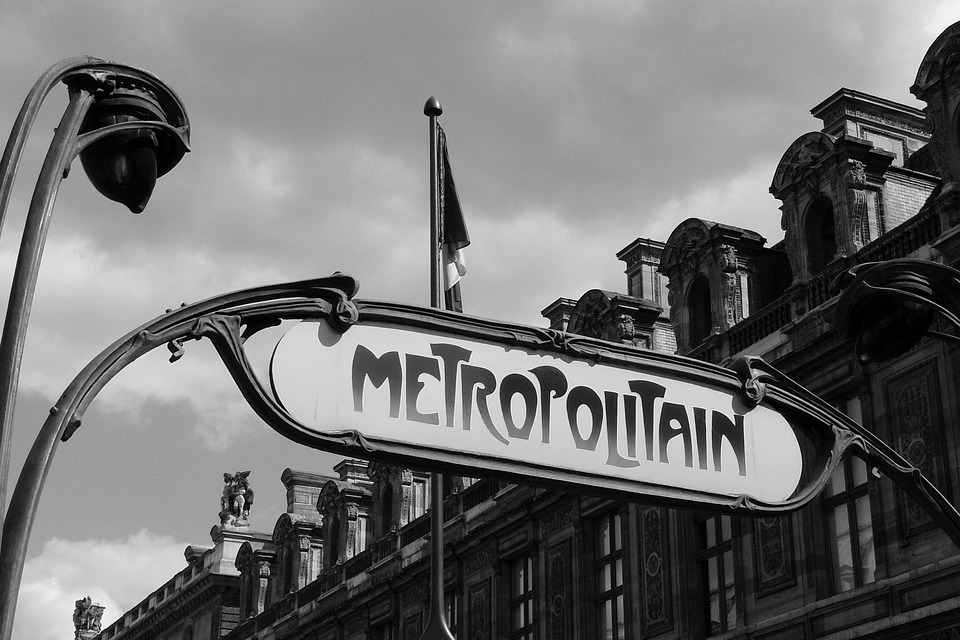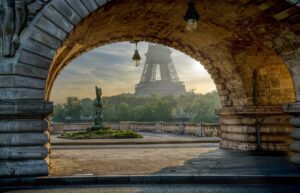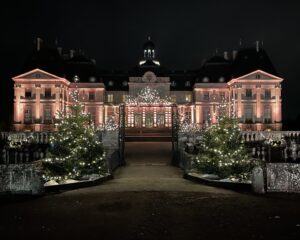It’s been a long time since I took the Metro on a regular basis. I wouldn’t go so far as to say that I miss the actual experience of riding the Metro. But I will say that I’ve always appreciated the ease and efficiency of it. In just half an hour, I can get almost anywhere in the city, and I don’t have to fight traffic to do so. I can just pop on a podcast and chill until I reach my destination. Now, in the era of COVID living, I only take the Metro when absolutely necessary. As a result, I often find myself looking longingly at the Metro signs every time I pass by them, imagining all the places I used to go. Which was how I came to notice just how many different kinds of Metro signs there are in Paris. And I wanted to know more.
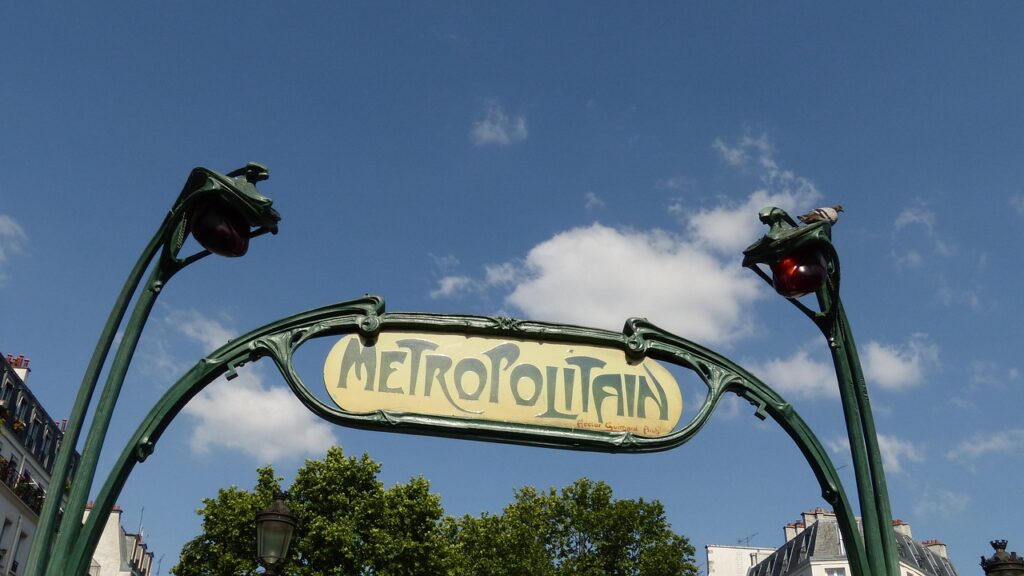
The Paris Metro Begins…
The current Metro system was first built for the World’s Fair in 1900. It was originally operated by the Paris Metropolitan Railway Company, or Le Métropolitain. This was soon shortened to just “the Metro”, which continues to be its name to this day. There are 16 lines altogether, with another four currently under construction. In pre-COVID times, it was estimated that over four million people rode the Metro every day, making it one of the busiest transit systems in the world. There are over 300 stations, and most of them have multiple entrances, meaning there are hundreds of Metro signs all over the city.
Hector Guimard and Art Nouveau
The most famous and widely photographed of these signs are the original Art Nouveau entrances designed by Hector Guimard. These signs are famous for their green painted cast iron, curving lines, and distinct lettering. Guimard designed nearly 150 entrances and signs between 1900 and 1913, but sadly, only 88 remain. He also designed several covered entrances called édicules, or kiosks (pictured above), with a design meant to replicate a dragonfly. Unfortunately, only two édicules remain today. Unsurprisingly, Guimard’s designs were not warmly received by Parisians when they were first unveiled, but they have gone on to become hugely popular. In fact, Guimard is credited with helping to popularize the Art Nouveau movement in the early 20th century, and his Metro designs have been copied in cities around the world.
More Metro Signs Are Needed…
As the Metro system began to expand, more signs were eventually needed. In the 1920s, a design called the Val d’Osne was introduced, which was loosely inspired by Guimard’s Art Nouveau designs. In the 1930s, an Art Deco version of the Val d’Osne was put into use called the Dervaux. Both of these designs included a rounded lamp on the top, but this style fell out of favour in the post-war period.
The Modern M
More recent designs include a simple yellow M enclosed by two metal rings, as well as the blue font M of the most recent line 14. In my opinion, neither of these designs compare to the beauty of the pre-war Metro signs. That being said, they do serve their purpose as entrance markers that stand out. I know that the big yellow M has saved me on more than one occasion when I was lost.
And then there’s the oddballs…
Of course, with hundreds of Metro signs all over the city, there are bound to be a few outliers. Stations like Sentier, Place Monge, and Franklin D Roosevelt all have one off designs that are slight variations on the ones listed above. But when it comes to beautiful but off the wall Metro signs, the hands down winner is the entrance directly opposite the Comédie-Française. This entrance is one of many for the station Palais-Royal – Musée du Louvre, and it truly is a sight to see. It was designed by artist Jean-Michel Othoniel and installed in 2000. And I can’t help but smile every time I walk by this work of art. I love that I live in a city where something like this is allowed to exist.
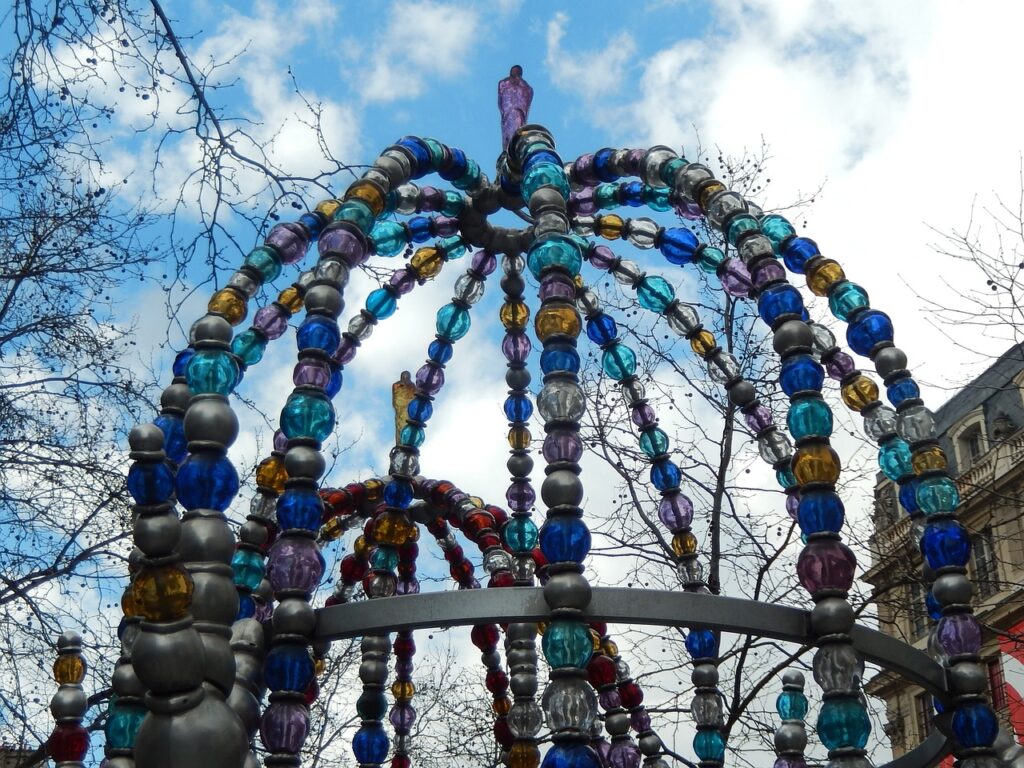
Like everything else in Paris, the Metro system has a long and storied history. I’m looking forward to the day when I can use it once more to explore the city. Until then, I’ll smile at the Metro signs as I pass by them, knowing that each one is a work of art in its own right. And they all tell a story.
Laura Moore is a professional storyteller who loves history and the many stories that make Paris one of the most fascinating cities in the world. Join one of her signature tours to learn the story of a city.

